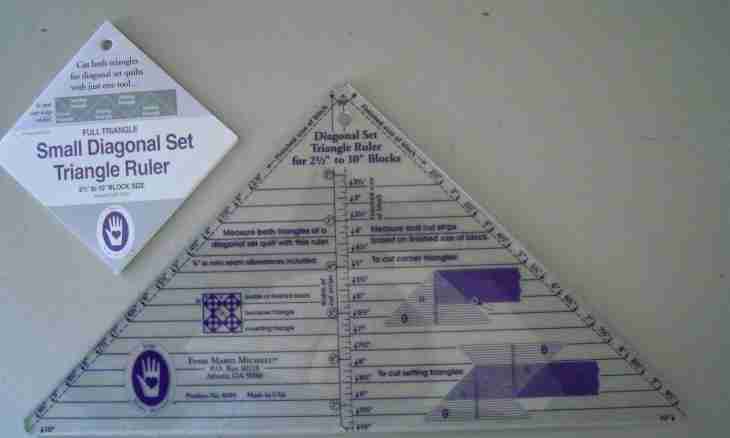Strictly speaking, the bisector is the beam which is halving a corner and having the beginning in the same point where also the beams forming the parties of this corner begin. However in relation to a triangle mean not a beam, but a piece between one of tops and the party of a figure opposite to it by a bisector. Its main property (halving of a corner in top) remains also in a triangle. Such feature allows to speak about length of a bisector and to use the corresponding formulas for its calculation.
Instruction
1. If lengths of the parties are known to you (an and b) a triangle, forming the halved corner (γ), length of a bisector (L) it is possible to bring out of the theorem of cosines. For this purpose find value of the doubled work of lengths of the parties on a cosine of a half of a corner between them and divide the received result into the sum of lengths of the parties: L=2*a*b*cos(γ/2)/(a+b).
2. If the size of a corner which shares a bisector is unknown, but lengths of all parties of a triangle are given (a, b and c), for calculations is more convenient to enter an additional variable - poluperimetr: p=½ * (a+b+c). After that a part of a formula of length of a bisector (L) from the previous step should be replaced - in numerator of fraction put the doubled square root from the work of lengths of the parties forming the corner divided by a bisector on poluperimetr and private from subtraction from a poluperimetr of length of the third party. Leave a denominator without changes - it has to be the sum of lengths of the parties of the divided triangle corner. As a result the formula has to look so: L=2 * √ (a*b*p * (p-c)) / (a+b).
3. If to complicate a formula radicand from the previous step, then it is possible to do also without poluperimetr. For this purpose leave a denominator (sum of lengths of the parties of the divided corner) without changes, and in numerator there has to be a square root from the work of lengths of the same parties for the sum of their lengths from which length of the third party and also for the sum of lengths of all three parties is subtracted: L= √ (a*b * (a+b-c) * (a+b+c)) / (a+b).
4. If in initial conditions not only lengths of the parties are given (an and b), forming the corner divided by a bisector, but also lengths of pieces (d and e) into which this bisector divided the third party, too should take a square root. In this case count length of a bisector (L) as a root from the work of lengths of the known parties from which the work of lengths of pieces is subtracted: L= √ (a*b-d*e).

